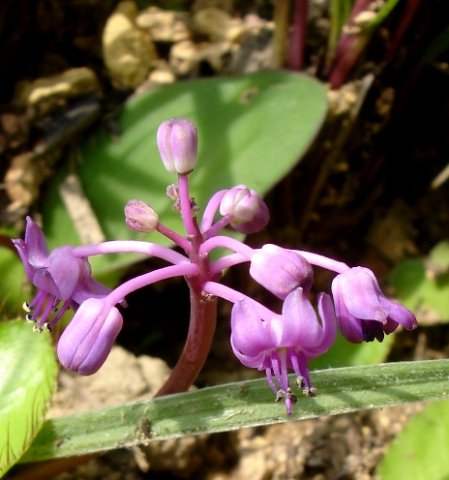Ledebouria monophylla

Author: Ivan Lätti
Photographer: Judd Kirkel Welwitch
Ledebouria monophylla is a dwarf, bulbous perennial reaching heights around 15 cm. The globose bulb has fleshy roots below it.
The solitary leaf is broad to rounded or ovate with heart-shaped basal lobes and rounded or bluntly pointed tip, sometimes ending in a mucro. The smooth green blade is spread flat on the ground, fleshy and unmarked without mottling or striping, although faint vein lines may be visible. The margins are entire, sometimes red. The specific name, monophylla, is derived from the Greek words monos meaning alone and phullon meaning leaf, referring to the solitary leaf.
The species distribution is in the northeast of South Africa, inland in KwaZulu-Natal, as well as Mpumalanga and Limpopo. The photo was taken near the Sani Pass.
The habitat is montane, mistbelt grassland and in the open on rocky slopes in sandy, humus rich to acidic soils. The habitat population is deemed of least concern early in the twenty first century (iNaturalist; https://www.pacificbulbsociety.org; https://sa.ipps.org; http://redlist.sanbi.org).

